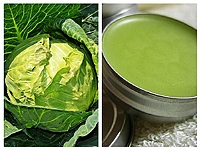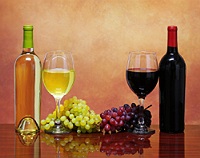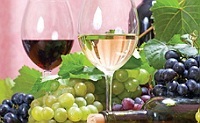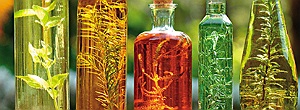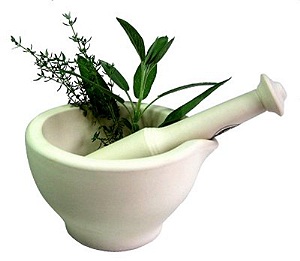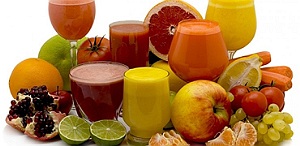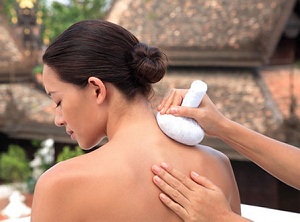
Herbal Tea
Herbal teas are well known for their effects on health, helping to cure or relieve certain ailments.
But it is good to know that they can be successfully used for body care, having recognized cosmetic properties.
For infusion cut fresh herbs and place in a glass bowl or pot metal.
Boil water and pour over the plants so prepared.
Fresh plants do not let it sit in the tea pot to draw only very briefly (30 seconds).
The infusion of the herb should be pale yellow or green light.
Dried plants let stand some time (1-2 minutes).
A tea thus prepared is much healthier and more pleasing to the eye.
Roots is inserted in the indicated amount of cold water, put give some hot and let stand 3 minutes.
The ratio of tea to one day enter into a thermos and drink occasionally a teaspoon throughout the day, according to indications.
In general put a teaspoon as indicated in each plant (a plant leading to a quart of water).
Some herbs may not be scalded, because they would lose strength curative cooking.
This tea with cold water so prepared is also called cold soak or extract.
The amount indicated for each plant leaves in cold water soak 8-12 hours, then macerate heats only slightly, and rations for the day is stored in thermos that has been rinsed with hot water.
The mixture of cold infusion extract is considered the best way to use medicinal plants.
For crushed herb decoction is introduced from the start in cold water boil and allowed, after the liquid starts to boil, simmer 20-30 minutes on slow fire.... read more ...
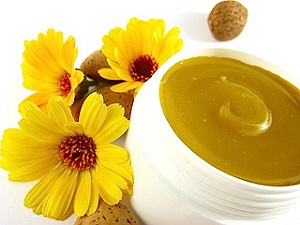
Ointments and Oils Herbal
Such ointments quite expensive now commercially can be obtained easily at home, the old recipes.
The results will be the same, but with minimal expenses.
In addition, we are sure that we use the best quality ingredients.
An ointment prepared home has therapeutic virtues as strong as in the pharmacy, perhaps even more effective, because it is taken down by your hand.
Preparation of herbal ointments
For the preparation of ointments chop twice by two handfuls of herbs.
Heat 500 grams of lard, as it would make fried.
Plants fat mix in this hot, let it sizzle briefly in the pan, stir further, pull the pan off the heat, cover and leave to cool overnight.
The day warms everything easily filter through gauze and cream thus obtained is introduced previously prepared hot jars.
To prepare oils from herbs, flowers or plants jab without stuffing in a bottle to the neck and pour in olive oil cold pressed, so that the oil is covering plants with a thick layer of two fingers.
Allow 14 days the sun or near the stove. ... read more ...
Health is the most valuable asset of man, say Hippocrates and the doctor is obliged to choose the least harmful way to preserve it.
This path has proven over time to be natural medicine.
The disease is seen today as an imbalance that occurs between man and nature.
This disagreement affecting sometimes life itself can be remedied by turning to herbal therapy (herbal pharmacy) based on natural agents as: air, cold, food, plants.
In the world recorded a comeback to the principles of phytotherapy (herbal pharmacy), which uses plant products derived from medicinal plants in treating human body.
Vegetable products are preferred because they are easily assimilated, well tolerated, no adverse reactions or side effects and does not cause undesirable habit.
If we look around us we see every step, a plant, a vegetable, a fruit, they may have need for food or medicine.
Only their purpose to know it then, we have to wonder why the good that God has allowed to grow up around us.
This practical guide for use of planes medicinal want to communicate the opportunities that nature gives us in treating various diseases may some viewed as incurable especially now that we are in a financial trouble and treating disease has become more expensive than ever... read more ...

Hazelnut herb
Body plant used: leaves (Folium CORYLI), bark (Cortex CORYLI) hazelnut.
Harvesting period: the hazelnut can harvest in June-July.
The hazelnut-Natural Treatments
Internal use: the hazelnut is antihemorrhagic and disinfectant for open wounds, perspiration.
In internal use herb is used to treat hemorrhoids, varicose veins, edema of the legs, eczema, vitamin deficiencies, emphysema, silicosis, asthma, hepatitis outbreak.
External use: in external use hazelnut is used for healing ulcers, treatment perifeblitei, pecinginelor, boils eritocianoza sweet and lower limbs.
Infusion buds nuts: the infusion is prepared from 1 to 2 teaspoons of peanut sprouts in a cup of boiling water.
If consuming a daily vitamin deficiencies 250g fresh peanuts.
Peanuts are considered a good remedy against hemolytic anemia (destruction of red blood cells), while leaves and husk extract or young branches is considered effective in periflebite (inflammation of the membrane that covers the external fibrous veins).
...READ MORE... http://www.farmacianaturala.com/alunul/alunul.html

Cornflower Herb
Growth: the plant is frequently the plains to the mountains, in cereal crops by sandy places.
Body plant used: marginal flowers and antodiile, entirely.
Harvesting period: marginal flowers in July-August and atondiile from July to September inclusive.
Cornflower-Natural Treatments
Internal use: in internal use cornflower used for kidney, gallbladder disorders, anorexia, heart failure, phlebitis, edema, biliary dyskinesia, dyspepsia. The plant is used as an infusion or maceration.
External use: the plant is used for internal use eye disease conjunctivitis.
Infusion of flowers Cornflower: more than a teaspoon of dried flowers pour a cup of boiling water and leave for 15-20 minutes.
Strain and drink warm in three innings half an hour before meals. It has diuretic in kidney and liver disease.
A more concentrated infusion of 2 teaspoons of flowers per cup of water, put compresses on the eyes is used in conjunctivitis and tired eyes. … read more…
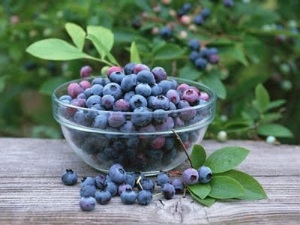
Bilberry Herb
Growth: bilberry is met, mountain forests, clearings of forests, juniper bushes and juniper, mountain and subalpine meadows, the entire Carpathian Mountains, especially on shady slopes and wet.
Body plant used:bilberry leaves and fruits.
Harvesting period:bilberry leaves can be harvested from May to September inclusive, and the fruit matures from July to September.
Internal use:in internal use bilberry is used treat the following conditions:
Diarrhea, enteritis, diabetes, uremia, urinary infections, kidney calculus, gout, rheumatism, intestinal worms (pinworms), eczema, hemorrhoids, colitis fermentation of rotting colitis, acuity, old age.
External use:in external use herb is used to treat pharyngitis, stomatitis and thrush.
Natural treatments with bilberries (fruit).
In the morning on an empty stomach, eat 200g cranberry or more, exclusive cure is two - three kilograms for three or four days.
Bilberries cure is indicated for lowering blood urea value, and as an adjunct in the treatment of tuberculosis.
Even once consumed in greater quantity, bilberries significantly improves visual acuity, especially at night, and regenerate retinal purple. … read more…

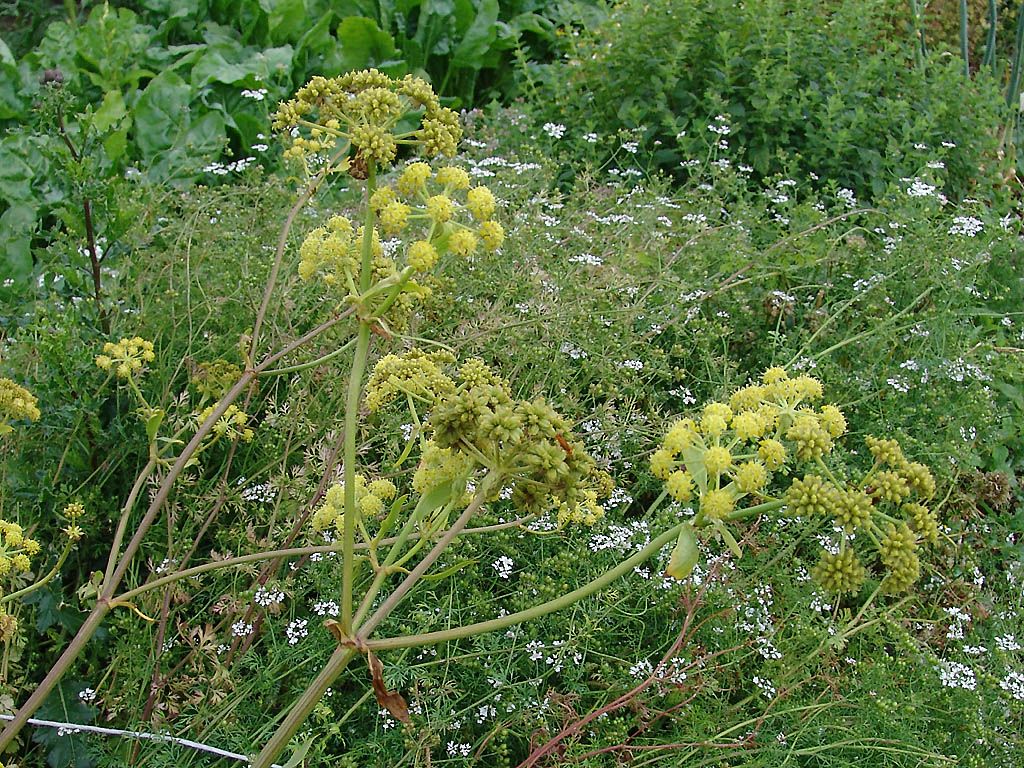
It is a multi-annual plant that grows in the garden (the crop).
A bush grow lovage nice and fast.
The stems are hollow, large leaves have a distinct odor and strong.
In Latin it is called LEVISTICUM OFFICINALE.
In German name is LIEBSTOCKEL (love stick) due aphrodisiac properties, and the roots they call MAGGI (hence the brand known company that offers dishes concentrates, soups, sauces, etc.).
Lovage probably comes from Iran, but in the Middle Ages began to be cultivated in Europe.
It is known that King Charles the Great ordered mandatory lovage cultivation in each garden.
As active substances lovage contain essential oils, butilftalide, isovaleric acid and coumarin derivatives.
As a medicinal plant (leaves or lovage root) is used to treat the following conditions and diseases: dropsy, rheumatism, heart disease, gout.
The plant causes a good diuresis (removal of body water) which help remove kidney stones (kidney sand).
Also lovage help dissolve bronchial secretion and facilitates expectoration.
Beets help in the treatment of diseases of the stomach.
Usually, lovage is used in flavoring in soups purposes, but also as a medicinal plant.
For tea, lovage is used in combination with other plants.
The treatment of skin eruptions, use a decoction of the leaves and roots of lovage races.
Douches are portions of diseased skin.
After 2 weeks the skin becomes again smooth.
In the treatment of stomach diseases races roots and leaves are used chopped, prepared a tincture is concentrated.
In people, tradition says that pregnant women should avoid this herb.
It eats plants causing premature births. ... read more ...
It has branched root, strong.
Short trunk, globular crown, dense with thick branches.
The bark turns gray early death in tissues that fall into thin blades .
Stalks and buds young lenticels opposite, large, glossy brown, gummy.
The flowers are grouped in large panicles, erect rich.
They symmetrical, yellowish-white, stained red.
The fruits are green capsules, 3-5 cm in diameter large, spiny, open at maturity in March valve, immediately releasing large seeds 1-2, shiny brown with a high hil, yellow.
Hippocastani floral Flores.
Leaves, Folium hippocastani.
Semen hippocastani-seeds.
Bark-Cortex hippocastani.
Harvesting:
The flowers are harvested in late April and May, when opened more than half of them.
Break or cut with scissors tree blossoms, then pinch the flowers on stalks.
The leaves are harvested in May and June, without petiole, each folio by breaking or cutting at the union petiole leaf.
The seeds are harvested in September-October, in stages, as the fall.
Bark - start sap spring, when the buds begin to burst, the smooth young branches in the pan forming crown.
It is made by cutting ring to 10-15 cm and a cut in long distance, yielding tubular fragments without quality wood.
Horse Chestnut-Natural treatments
It reduces capillary fragility.
Use complementary treatment: phlebitis, varicose veins, hemorrhoids, prostate hypertrophy, rheumatic pain.
Usage.
Internal: form of pharmaceutical products, whereas the limit between the therapeutic dose and toxic dose is small.
Prepare tincture and capsule form.
External: 1 teaspoon bark decoction of 200 ml water;
Tincture of bark and fruits 30%.
As compresses, local baths ... read more ...
